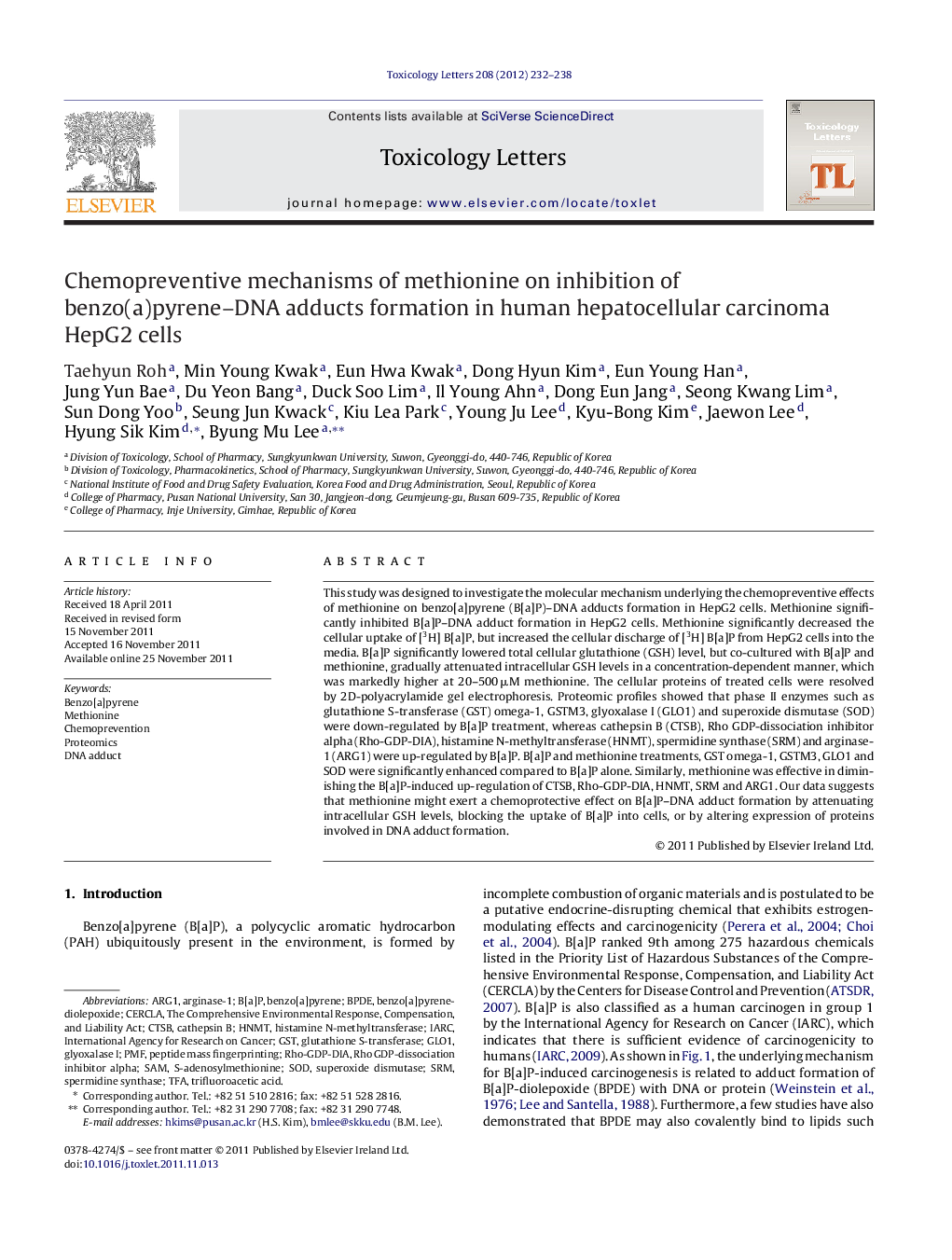| Article ID | Journal | Published Year | Pages | File Type |
|---|---|---|---|---|
| 2599799 | Toxicology Letters | 2012 | 7 Pages |
This study was designed to investigate the molecular mechanism underlying the chemopreventive effects of methionine on benzo[a]pyrene (B[a]P)–DNA adducts formation in HepG2 cells. Methionine significantly inhibited B[a]P–DNA adduct formation in HepG2 cells. Methionine significantly decreased the cellular uptake of [3H] B[a]P, but increased the cellular discharge of [3H] B[a]P from HepG2 cells into the media. B[a]P significantly lowered total cellular glutathione (GSH) level, but co-cultured with B[a]P and methionine, gradually attenuated intracellular GSH levels in a concentration-dependent manner, which was markedly higher at 20–500 μM methionine. The cellular proteins of treated cells were resolved by 2D-polyacrylamide gel electrophoresis. Proteomic profiles showed that phase II enzymes such as glutathione S-transferase (GST) omega-1, GSTM3, glyoxalase I (GLO1) and superoxide dismutase (SOD) were down-regulated by B[a]P treatment, whereas cathepsin B (CTSB), Rho GDP-dissociation inhibitor alpha (Rho-GDP-DIA), histamine N-methyltransferase (HNMT), spermidine synthase (SRM) and arginase-1 (ARG1) were up-regulated by B[a]P. B[a]P and methionine treatments, GST omega-1, GSTM3, GLO1 and SOD were significantly enhanced compared to B[a]P alone. Similarly, methionine was effective in diminishing the B[a]P-induced up-regulation of CTSB, Rho-GDP-DIA, HNMT, SRM and ARG1. Our data suggests that methionine might exert a chemoprotective effect on B[a]P–DNA adduct formation by attenuating intracellular GSH levels, blocking the uptake of B[a]P into cells, or by altering expression of proteins involved in DNA adduct formation.
► We examined the chemopreventive effect of methionine on the B[a]P–DNA adducts formation. ► Methionine significantly inhibited B[a]P–DNA adduct formation in HepG2 cells. ► Methionine enhanced the levels of GST omega-1, GST M3, glyoxalase I and SOD in B[a]P-treated HepG2 cells. ► Methionine might exert a chemoprotective effect on B[a]P–DNA adduct formation by altering expression of proteins involved in DNA adduct formation.
